Reviewed by Anurag Mishra (Sr. Technical Consultant)
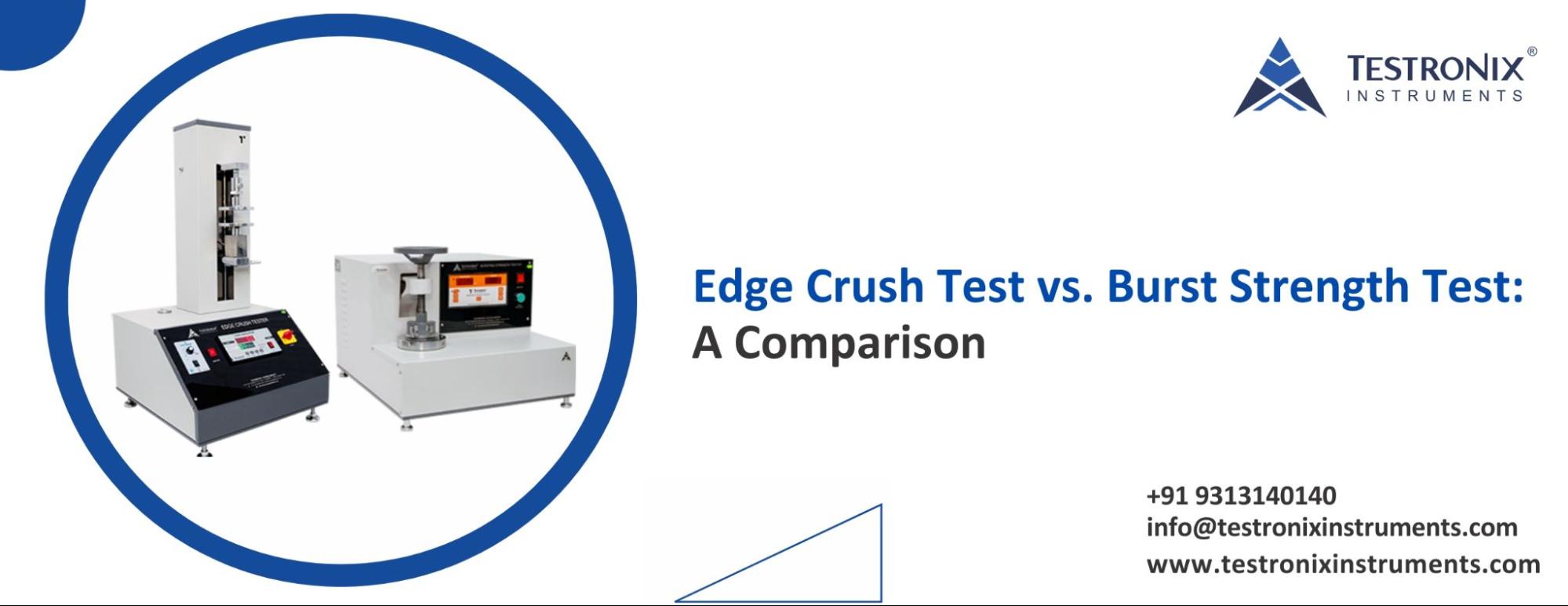
Hey there! Are you ready to dive into the really cool world of packaging tests? Buckle up because we are going to navigate through the Edge Crush Test and the Burst Strength Test. These two tests can be compared to Batman and Robin in the packaging world, but each one has its own superpowers. So, let's unpack (pun intended) what makes each of these tests tick and why they're crucial for ensuring your packages can handle their own.
Let’s not rush into the nitty-gritty, and break this down
Edge Crush Test (ECT): Imagine this as your cardboard's "toughness test". This ECT is an indicator of how capable a cardboard sample is in regard to standing crushing forces when stacked boxes are on top of other boxes. More or less, it's like asking if your box can actually hold a pretty heavy load without breaking to pieces under pressure.
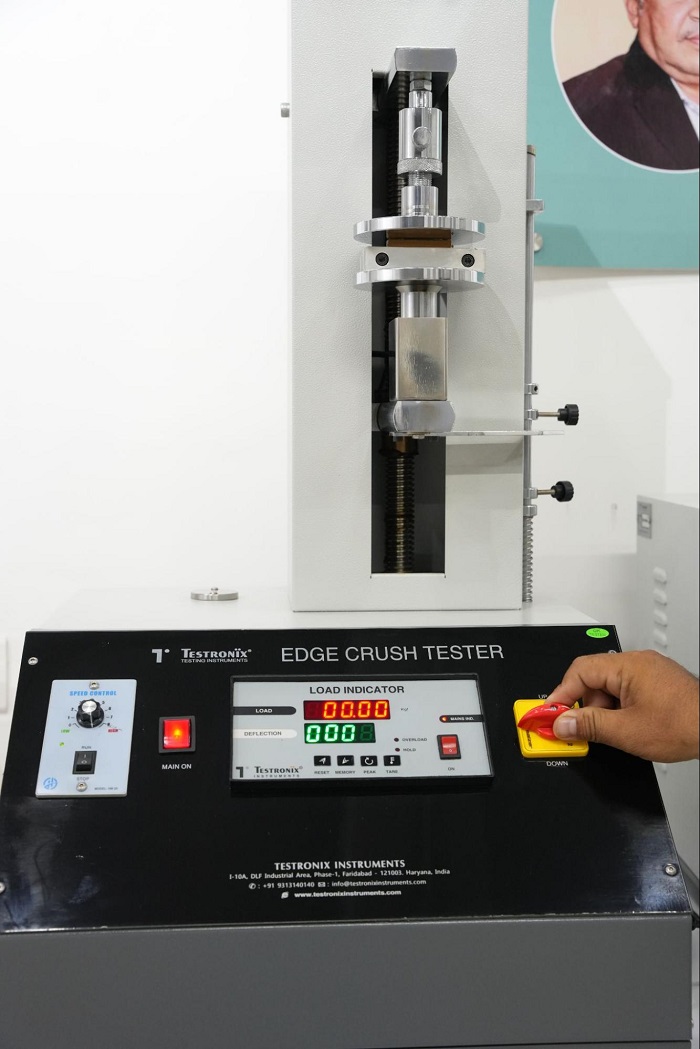
Burst Strength Test: The "pop" principle is what it is all about. The force to make a hole pierce or burst a piece of cardboard, the Burst Strength Test measures this. It is like testing the amount of force that it takes to poke a hole through a box.
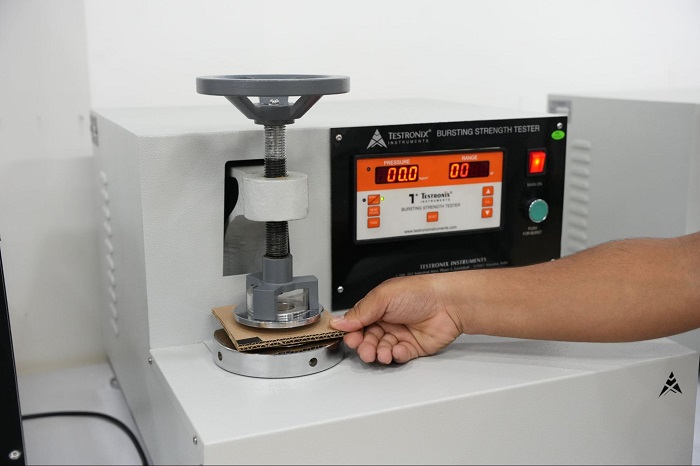
Well, let's dig into these tests a little deeper.
Imagine your cardboard box being in a nightclub. In this example, the ECT is the bouncer checking if it can stand the pressure of a crowd. ECT measures the amount of force the edge of a piece of cardboard can take before collapsing. It is measured in pounds per inch (psi), and the higher the number, the more robust your box will be.
Example:
We assume that we have two cardboard varieties, Type A and Type B. Type A has a rating of 32 psi, making Type B's rating actually higher than this, 44 psi. So, if you're stacking boxes in a warehouse, Type B would be able to take more weight with it, not getting crushed so easily. So, shipping heavy items, you go with Type B.
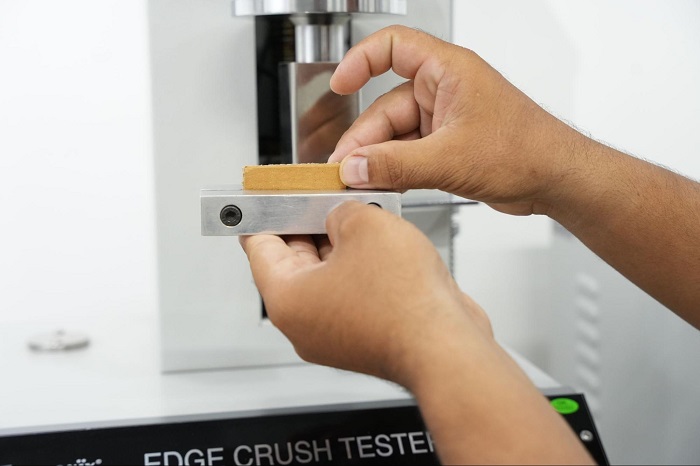
So now, let's change gears to the Burst Strength Test. Visualize this as the heavyweight champion of the boxing world. The Burst Strength tests how much force it takes to puncture or burst the cardboard. It measures in pounds per square inch (psi) and is done by being pressed down until the cardboard yields.
Example:
Suppose you're testing two varieties of cardboard once more. Type X bursts at a force of 200 psi and Type Y at a force of 300 psi. If you're shipping something sharp or something heavy, then Type Y would not puncture or tear as easily.
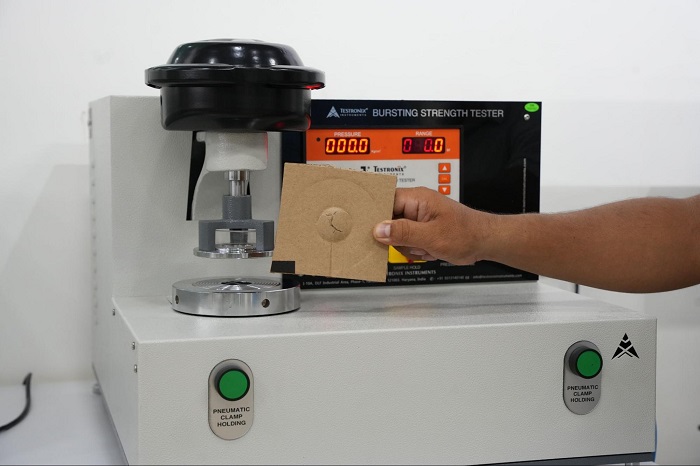
Alright, let's make everything clear. First of all, even though both tests are important for packaging, they measure two different things. Let me quickly contrast the two:
FOCUS
ECT: Measures the edge crush resistance. It is supposed to translate how much the box can take in terms of stacking or compression.
Burst Strength: Measures resistance against bursting or puncturing. It means the box's ability to resist sharp objects or impact.
MEASUREMENT
ECT: In pounds per inch (psi).
Burst Strength: Also in pounds per square inch (psi).
APPLICATIONS:
ECT: Good for measuring strength levels on stacked or loaded corrugated boxes.
Burst Strength: Primarily used for testing the durability strength of a box when attacked by sharp objects or impacts.
Think of it this way, when hosting a party, you would want the place to accommodate a number of people and to be strong enough to withstand spills of drinks. When packing, you would want to be sure that your box is hard enough and does not come apart due to weight or may undergo punctures from sharp objects. So, by using both tests, you are covering all your bases.
Practical Examples
Ship Electronics: If an item is very pressure-sensitive and a prickly object, for example, electronics, then you would need a high burst strength cardboard to avoid damage from punctures as well as a respectable ECT rating to ensure that the cardboard can stand up to stacking and shipping.
Packaging of Food Products: If food products are stacked in large numbers for packaging, then ECT is important. You want the boxes to be strong enough to withstand the weight without falling. Good burst strength would be helpful if the food packaging has sharp edges.
FAQs
This is a matter of what you're shipping. If your packages are stacked or compressed, use ECT. If they're likely to impact sharp objects, use burst strength. In a lot of instances, using both tests gives you the best overall picture.
Not really. ECT at a high rating means the weight-carrying capability of the box would be good, but that does not mean it would not puncture under low burst strength. Ideally, you want to find a box that has a balance of both.
Yes, there are industry standards that include: ECT ASTM D4727 and burst strength ASTM D903. These industry standards ensure the tests will be done with consistency and reliability.
Conclusion
That's it, then! The Edge Crush Test and the Burst Strength Test are two sides of the same coin. Each test gives you unique information about the level of durability of your packaging. Now, when you know both, you'll be better equipped to make the best decisions possible to make your boxes as tough as they can be.
The next time you pack up some goods, take a moment to think about how these tests have helped keep everything safe and sound. Indeed, the better you test a box, the happier it is-and happy contents make it a happy box!